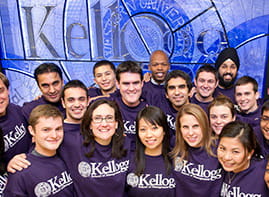The healthcare reform expert addresses some of the key issues facing an industry on the cusp of change
3/14/2012 - As the U.S. Supreme Court prepares to review challenges to the Affordable Care Act, the American healthcare system stands at what
David Dranove calls a watershed moment.
Dranove, the Walter McNerney Distinguished Professor of Health Industry Management and director of the Center for Health Industry Market Economics, is Kellogg's resident expert on healthcare reform. After more than 25 years as a researcher, teacher and policy analyst, Dranove says he continues to be struck by "the lack of basic understanding of health economics among those who are most vocal about effecting change."
Challenging this lack of understanding has become a professional mission for Dranove. His work has received a considerable boost from the newly created Health Care Cost Institute, a nonprofit organization that will collect data from private insurance providers to fuel research. Dranove is on the governing board and chairs the scientific research committee.
Here, Dranove breaks down the key issues facing healthcare, an industry on the cusp of monumental change.
Q: You're not a fan of the Affordable Care Act.
A: I have mixed feelings. The idea of a health insurance exchange that will allow individuals who don't currently have health insurance to access the market is actually pretty good. What they've done in Massachusetts to try to create that kind of exchange is a good effort, and it's working. However, there are rules about how insurers have to compete in the exchange, and a lot of people don't like the government deciding exactly what insurance has to look like. Frankly, what I don't like is the notion that the federal government has chosen one solution when it would have been very easy to leave that up to the states.
Q: How can the healthcare system become more efficient and accessible?
A: First, create comprehensive, integrated electronic medical records. We also need standards for costing, and we need to do a better job of measuring the outcome to measure quality. We need to make the healthcare market look like other markets, so that managers can determine how to produce products more efficiently.
Q: How will the Health Care Cost Institute inform research on the healthcare system?
A: For decades, researchers have bemoaned the lack of comprehensive data on patients. With the Health Care Cost Institute, four major health insurance companies have agreed to make all of their claims data available for research by academics and government agencies — basically anybody who wants to use the data for something other than the profit motive. It's going to transform research in a remarkable way.
Q: Does the profit motive belong in health care?
A: This industry historically relied on nonprofits in both the provider sector and the insurance sector to make sure that people had access to care. We have seen tremendous investments in both sectors by investor-owned and private equity companies, but in the process it seems everybody in the industry has their eyes on the bottom line. I think it's worth debating whether we are really better off with all this innovation but with a mindset that believes that profits are what drive the system.
Q: What is the role of a business school in training the next generation of leaders for the healthcare industry?
A: Most people going into healthcare management were trained in schools of public health, where they're not taught business strategy or management skills. If we're going to truly transform medical care, we have to transform the training of the people in the value chain. Kellogg is one of the leading programs to promote business education as a way to prepare people to solve the problems of the health sector.
Further reading: Six ways to diminish dehumanization in medical settings






